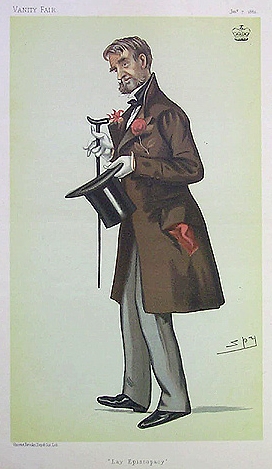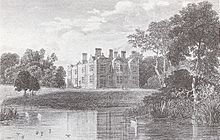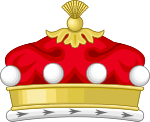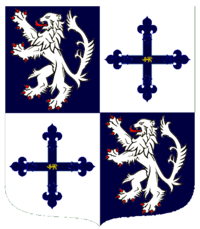Hungerford Crewe, 3rd Baron Crewe facts for kids
Hungerford Crewe, 3rd Baron Crewe (born August 10, 1812 – died January 3, 1894) was an important English landowner and a member of the British nobility. He was very interested in history and science. Because of this, he was chosen to be a fellow of the Society of Antiquaries of London in 1840. The next year, in 1841, he also became a fellow of the Royal Society, which is a famous group for scientists.
Contents
Early Life and Education
Hungerford Crewe was the son of John Crewe, 2nd Baron Crewe, who was an army general. His mother was Henrietta Maria Anna Walker-Hungerford. He went to two well-known schools. First, he studied at Eton College, which is a famous boarding school. After that, he attended Christ Church, Oxford, a college at the University of Oxford.
He had two sisters: Henrietta Hungerford Offley Crewe, who lived from 1808 to 1879, and Annabella Hungerford Crewe, who lived from 1814 to 1874. Letters written by his sisters, and a few by Hungerford himself, can be found at the Borthwick Institute for Archives in York.
Becoming a Landowner
When his father passed away in 1835, Hungerford became the third Baron Crewe. This meant he inherited a large estate. The estate included the beautiful Jacobean house called Crewe Hall in Cheshire. He also owned a lot of land in other areas like Staffordshire and Leicestershire.
By 1871, he was one of the biggest landowners in Cheshire. He owned about 10,148 acres (4,107 hectares) of land. When he died in 1894, the total rent from his properties was around £37,000 each year.
Helping His Tenants and Community
Lord Crewe was known as a kind landlord. He helped the people who lived and worked on his land. He rebuilt farms and provided new cottages for them. He also helped to fund schools in the area.
In 1866, there was a serious animal disease called the cattle plague. This disease affected many farm animals. Lord Crewe paid more money to his tenant farmers whose herds were sick than the law even required. This showed how much he cared for them.
He also gave many gifts to local communities. For example, in Sandbach, he gave his income as the lord of the manor to the local council. He also donated land for a town hall and a market hall. He even built a drinking fountain for everyone to use.
Changes Around Crewe Hall
The time Lord Crewe lived in was a period of big changes. When he first took over the estate, the area near Crewe Hall was mostly countryside with a few farms. By the time he died, it had become a major railway hub. This new town was called Crewe.
He tried to stop a railway line from being built through his estate. This line was planned to go from Newcastle-under-Lyme to Wrexham. However, he was not successful, and the railway was built.
Improving Crewe Hall Estate
Lord Crewe wanted to make Crewe Hall even better. From 1837 to 1842, he hired an architect named Edward Blore to make changes. Blore changed the layout of the building. He also redecorated the inside in a style that matched the original Jacobean house. Modern updates were added, like a warm-air heating system. Blore also added a clock-tower to the stables and built a gate lodge. All these improvements cost £30,000.
In January 1866, a fire badly damaged the main hall. Lord Crewe then hired Edward Middleton Barry to restore the building. Barry was the son of Charles Barry, who designed the Palace of Westminster. The restoration work took place from 1866 to 1870. Barry added a tower to the west wing of the hall. This tower was needed to store water, but it also helped connect the two main parts of the building. He also changed the layout of the ground floor.
After the fire, the gardens were also redesigned. William Andrews Nesfield worked on the gardens. His son, William Eden Nesfield, designed other buildings on the estate.
Death and Legacy
Lord Crewe died from influenza at Crewe Hall in 1894. He never married, so he did not have any children to inherit his title. Because of this, the title of Baron Crewe ended when he died.
His large estates were inherited by his nephew, Robert Milnes. Robert was the son of Lord Crewe's sister, Annabella Hungerford Milnes. Robert later became the Earl and then the Marquess of Crewe.
Arms





